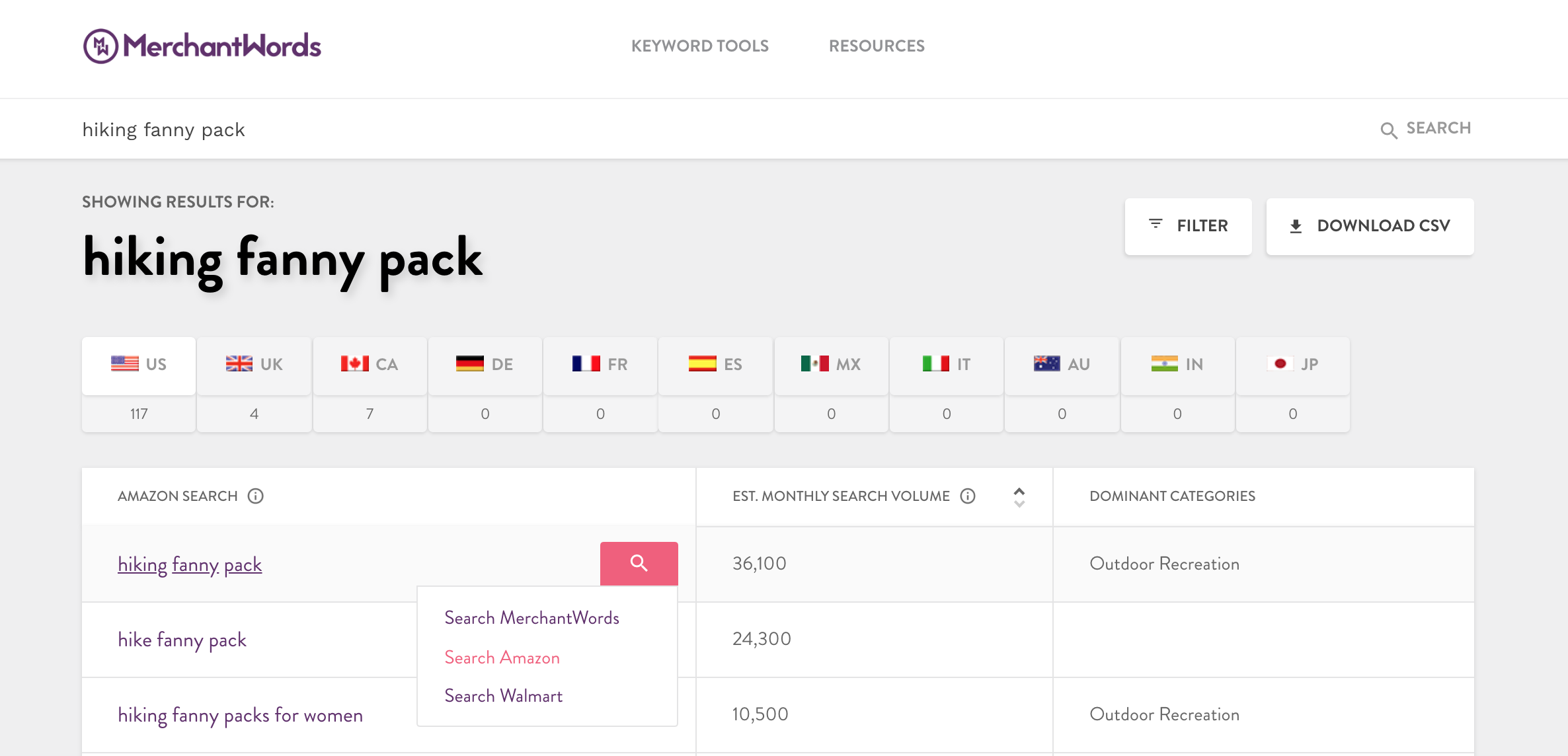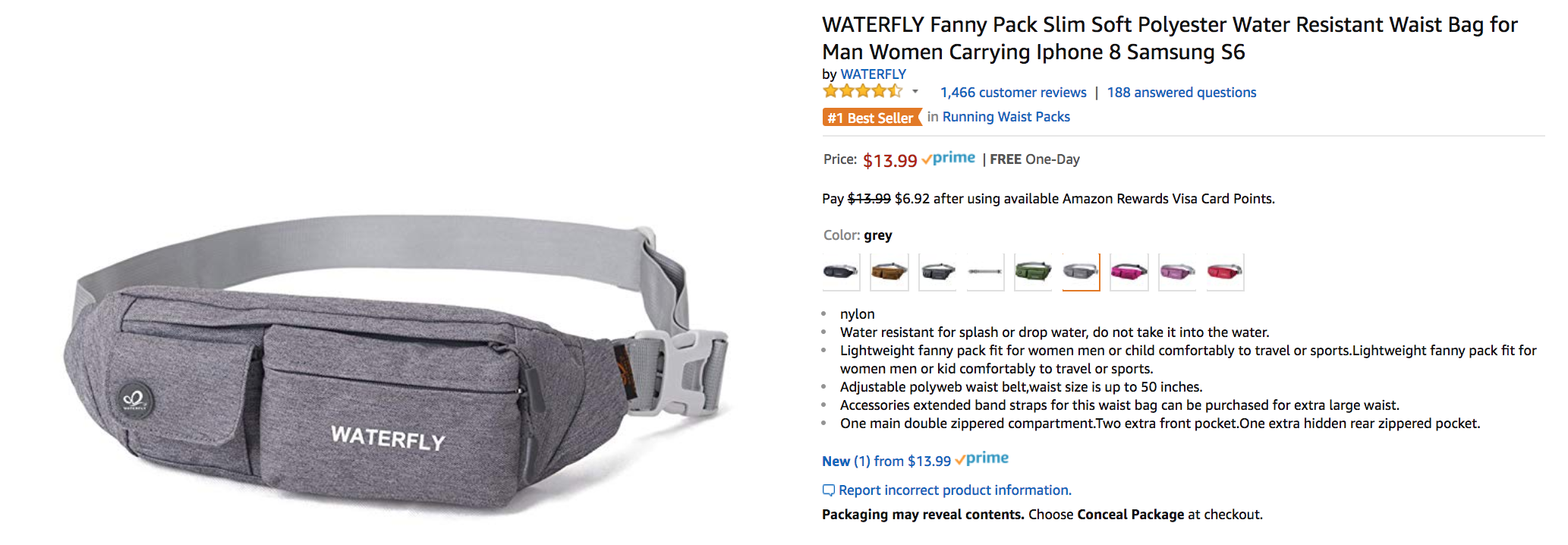The most critical part of launching a new product on Amazon is making sure you’ve chosen the right product to sell. While conducting product research can be a time-consuming task, it’s incredibly important to your later success.
MerchantWords has helped Amazon sellers and vendors meet their goals since 2012. Over the years we’ve received great feedback and advice from our customers on how they find the best products for their brands.
Here’s our list of the top tips...

1. Take your time.
Finding the right product can be a long process. It won’t happen in a day, so don’t be disappointed if you don’t find something immediately.
Be patient. You’re going to see a lot of products that aren’t right before you discover a gem.
2. Be solution-oriented.
Focus on a need or problem in your life that a product could solve. Also, consider the products you use on an everyday basis. Which ones could you improve in some way? Customers are always looking for products of higher quality than those currently on the market.
If you have an existing business, new product ideas should complement your current inventory. They should align with your brand and the strategic direction of your company.
If you’re starting a new business or this is your first time joining the world of e-commerce, you’ll need a broader scope for potential products. This initial brainstorming session can help you find direction and definition.
3. Start brainstorming!
Before you scroll through the Amazon Best Sellers list or check out the latest research tools, sit down with a pen and paper. While you can do this yourself, sometimes sitting down with a couple of friends or business partners can boost creativity and get the ideas flowing.
Make notes on the products you use every day, the products you wish you could find, those that are poorly made or too expensive, and those that could be repurposed and marketed to a different demographic. For each product that you add to your list, keep in mind who your customer is and how the product can be improved, customized, or bundled to increase its value.
4. Build a list of keywords.
Build a list of associated keywords for each potential product on your list. MerchantWords can be a huge help here - we have millions of keywords to help you get your research started.
It might be tempting to only compile a list of the broad “top-of-the-funnel” keywords because of their high search volumes. While these might be the most popular shopper search phrases, they are likely to be associated with very competitive products.
Customers search in a myriad of ways, so keep digging! You might find that the best idea for your product comes from a long tail keyword phrase further down the list. These targeted search phrases are coming from customers that know what they’re looking for in a product – and sometimes those products do not exist.
Long tail keywords also can provide insight into which features and functions customers like in a product. You might find that customers search for a particular color or other physical characteristics. These are all details to consider when developing your next best-seller!
5. Pay attention to search volume.
There’s no reason to keep looking into a product that has no demand. The consensus is that the main keywords associated with your product should have at least 30,000 searches each month. Additionally, the searches for your top 15 keywords should equal, if not exceed, 200,000 searches each month.
This exercise also helps you build a keyword list for later use in your product launch campaigns, listings, and advertising.
6. Search for your product keywords on Amazon.
How does the market look? Are there thousands of people selling variations of the product you’re considering? By researching each keyword you find on MerchantWords on Amazon, you’re able to understand the competitive environment for your product idea.
 Search each keyword you find on MerchantWords directly on Amazon to see the number and type of products available.
Search each keyword you find on MerchantWords directly on Amazon to see the number and type of products available.
Here are the factors to consider:
Price: To have a comfortable profit margin, the average price of products already on the market should be at or above $17.99. The sticker price gets divided by three: Amazon receives ⅓, shipping and production take ⅓, and you get to keep the last third. If you aren’t satisfied with that profit margin, cross the product off the list.
If prices have been dipping across the board, it’s usually a sign that the race to the bottom has begun and you do not want to enter the market.
Reviews: The total number of reviews help you determine the barriers to entry. If there are too many reviews, the competition is stiff and you likely won’t succeed in entering the market. When looking at reviews, at least five of the top ten listings should have under 100 reviews. You can exclude any Sponsored Product listings. If you see any listings with over 1,000 reviews, it may be best to consider another product.
Ratings: This is a great way to research what you can improve in a product. If the existing listings have the same negative quality and you’re able to fix it, success may be within your grasp – this is especially true if you find that products are selling well with three stars or less.
Sales ($$$): Before you start selling a product, you want to ensure that other sellers are already moving enough product to be profitable. Here’s where a tool like Keepa can help. Excluding Sponsored Products, the top ten sellers should be averaging $5,000-$6,000 per month. If they’re selling more than that, even better!
Listing Quality: Review the listings that are performing well and look at their images, bullet points, and description. Once again, you’re looking for areas for improvement. That could mean better product images or more lifestyle photos of people using the product. Maybe the copy does not highlight the key product features and hasn’t been optimized for search. If the competition has a great listing, that doesn’t disqualify your product idea. It merely informs you of how your listing should look to be competitive.
If the idea of putting together a wholly optimized listing overwhelms you, you’re not alone. MerchantWords’ Listing Advisor service can help you build an optimized product listing so you can focus on growing your business!

This product is might be too competitive with over 1000 reviews, but there is an opportunity to create a better listing.
7. Find a supplier you like and trust.
Once you’ve decided on the different features you want to be incorporated into a new product, it’s time to find a supplier. There are multiple websites set up to connect online sellers with manufacturers around the world. We like Alibaba. It gives you instant access to millions of global suppliers who manufacture or sell just about every product imaginable, and you can normally find low wholesale pricing.
If you’re working with an Amazon selling consultant or are adding a new product to your brand, you may already have a list of preferred manufacturers. If you don’t or you need a new supplier, here are some criteria to keep in mind:
1. At least two years as a Gold Plus Supplier: Gold Plus suppliers are high-level suppliers that have been premium members of Alibaba for over one year and are committed to long-term relationships with their clients.
2. Trade Assurance: Choosing a vendor that has trade assurance means that Alibaba will refund your money if your product does not meet your expectations or the shipment is received later than the quoted arrival date.
3. Reviews and Transaction-Level: If you have a supplier you like, be sure to check their qualifications. Pay attention to their reviews/business performance, transaction levels, and company certifications.
After you’ve gathered a list of suppliers that meet your criteria, email a minimum of 5 suppliers and make a Request for Quote. In your email, be sure to clearly and concisely convey the information you need to inform your decision. Ask for the product’s unit cost, minimum order quantities, production time, pricing for samples, and overall payment terms.
Top suppliers should respond to your query within 24 hours. During this exchange, make sure you are able to easily communicate with the manufacturer, and that the distance and difference in time zones will not complicate the production process.
Once you have heard back from multiple suppliers, seen multiple samples, and gathered all the information you need, choose the supplier that’s the best fit for you!
The bottom line
As you can see, finding a product can take time. But it’s all worth it to find a product that you’re passionate about, and that will be profitable for your business.
In fact, as you go through this process, it’s likely that you’ll find more than one great product to sell. From there, it’s a matter of deciding which product fits your brand best and getting that product to your Amazon store!
Moving forward and implementing your plan is crucial to your Amazon success. Without being decisive and taking action nothing will happen. Be confident in your research and make it happen!


